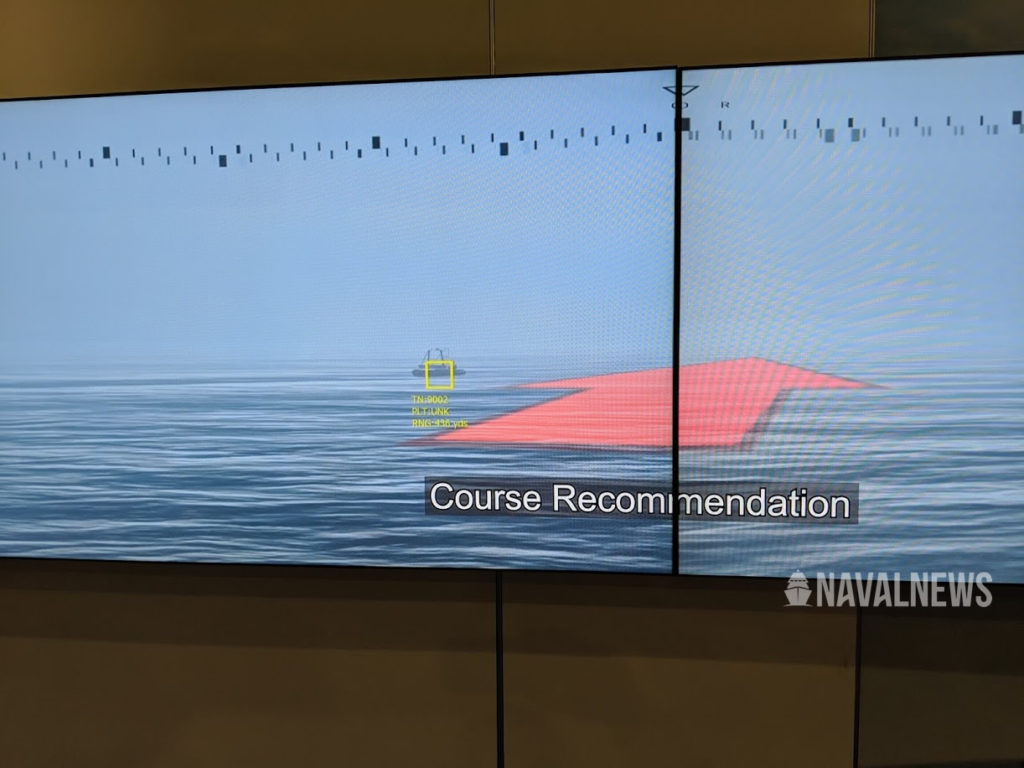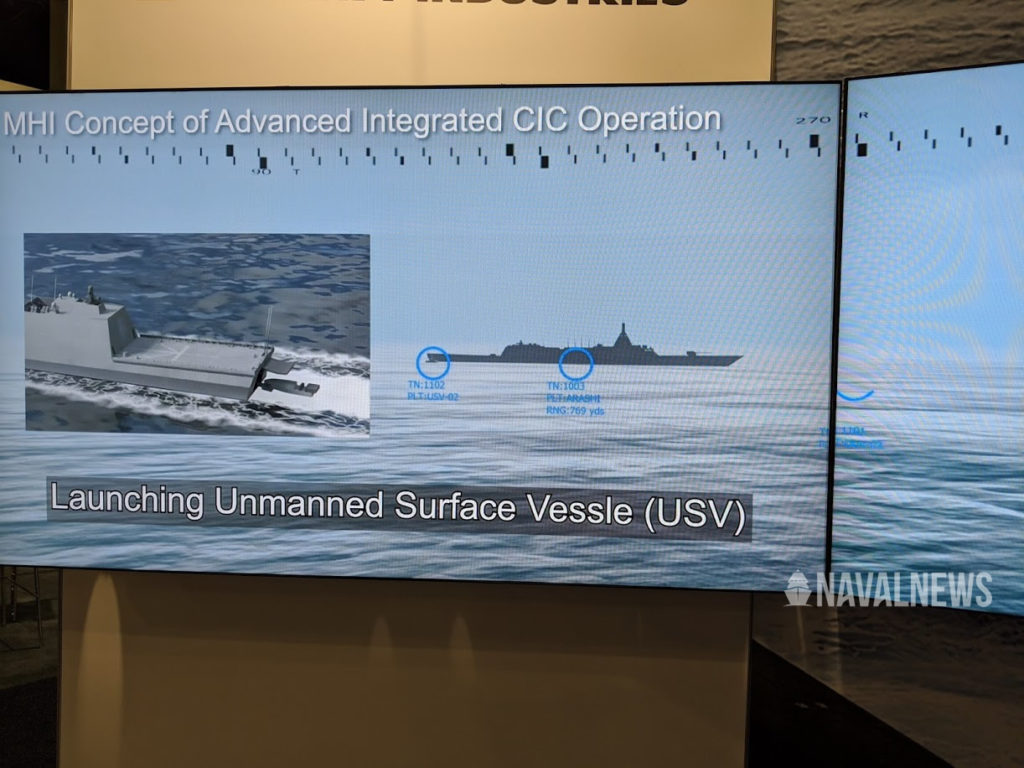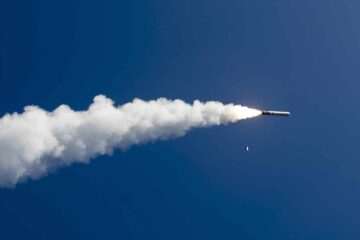30FFM (also known as FFM and previously known as 30DX) is the next generation multi-mission frigate currently being developed by MHI for the Japan Maritime Self-Defense Force (JMSDF).
MHI was not showcasing the frigate design for the first time (this design was shown previously at Euronaval 2018 and Sea Air Space 2018, and its early design featuring waterjets was unveil in the form of a remote controled scale model for tank testing during PACIFIC 2015 in Australia) but it is the first time that the Japanese shipbuilder shows details of the very advanced (almost futuristic) Combat Information Center (CIC).

Named the “Advanced Integrated CIC” by MHI, the CIC of the 30FFM features a circular arrangement (while every other CICs are either in square or rectangle shape) and comprises:
- An outer rim, with 14 multi function consoles (plus two extra seats), all facing the wall
- 3 rows at the center of the circle arrangement consisting in:
- (what looks like) a central helm station
- 4 more multi-function consoles (likely for the commanding officer and his XO)
- 2 large horizontal tactical table likely for cooperative mission planning and navigation purpose

According to MHI, the 360° giant screen fulfills many roles. It can be used to display the direct surroundings of the frigate, fusing the feed and data from the many electro optical, infra red, video and even radar sensors onboard. The augmented reality technology will greatly help the crew in the field of navigation, asymmetric warfare and even in the phase of launch and recovery of unmanned surface vehicles (the 30FFM was designed to deploy unmanned platforms for various tasks. This is become a trend, like the MRCV project in Singapore or the MCM mother-ships in Belgium).

In addition, the “video wall” can display any kind of information typically displayed on multi-function consoles. We were shown that the information from the engine control room, and typically displayed as part of the integrated platform management system (IPMS) can now be displayed in the CIC thanks to the video wall. Tasks such as engine control, damage control, fire fighting control can now take place from inside the CIC.
Situational awarness using the 360° augmented reality wall Navigation using the 360° augmented reality wall Navigation using the 360° augmented reality wall USV operation using the 360° augmented reality wall Night time navigation using the 360° augmented reality wall
Therefore, this new 360° video wall feature by MHI offers maximum flexibility to the crew of the future frigate, it makes the operation of the frigate more secure and offers interesting options in terms of redundancy and back-up (if the bridge or engine control are damage, the ships may still be operated from inside the CIC).

According to MHI, the 30FFM multi-mission frigate will have a full load displacement of about 5,500 tons, with a length of 132.5 meters and a beam of 16.3 meters. It will have a maximum speed in excess of 30 knots. The crew complement will be quite low, at about 90 sailors, indicating a high level of automation on board.

MHI told us the main requirements that drove the design of this future ship are:
- Very low radar cross section
- Very high speed
- Reduced crew
- Ability to launch and recover unmanned systems

To achieve such as high speed, the frigate will be fitted with a CODAG propulsion system consisting in a single Rolls Royce MT-30 gaz turbine and two MAN 12V28/33D diesel engines. Early designs of the frigate showed a combination of waterjet and propellers but the newer scale model (unveiled at SAS 2018) doesn’t show the underside of the hull anymore.

MHI won a contract from the Japanese MoD in October 2018 for the production of the first two frigates and MHI is today working on the detailed design of the frigate as well as production design stage.
First steel cutting is expected to take place in September this year. The vessels of this class will be produced at MHI Nagasaki shipyard. Delivery of the first frigate to the JMSDF is set for March 2022.











